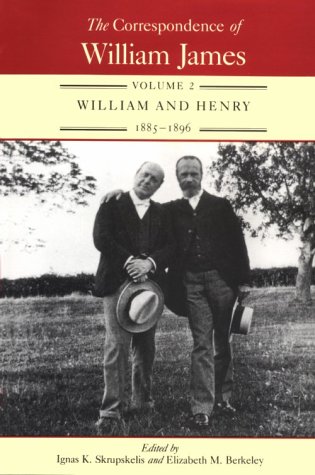William James, known for his contributions to psychology and philosophy, occupies a secure place in American intellectual history. The 12 volumes of ""The Correspondence of William James"" present his vast and entertaining correspondence with his brother Henry, with other members of his family, with friends and colleagues, as well as with enthusiasts and detractors among readers of his work. The publication of James's private letters complements the 17 titles of ""The Works of William James"". During the years covered in this second of 3 volumes devoted to the letters of William and Henry, each of the brothers underwent a period of trial or testing as a writer. Henry's attempts at fame as a playwright failed, and his 1880s novels did not receive the popular reception he had hoped for. William struggled for years to complete ""The Principles of Psychology"", while burdened by many responsibilities, intermittent depression and eye troubles, finally to have it published in 1890, 12 years after the contract date. These letters offer glimpses of the diverse academic, literary, and social worlds in which the brothers circulated, of Henry's friendship with Robert Louis Stevenson, William Dean Howells, Rudyard Kipling, and the American writer Constance Fenimore Woolson, who may have been in love with him. In William's letters he expresses pleasure and progress in his work, comments on Henry's writing, describes his meetings with and reactions to Paul Bourget and other continental writers, and even reports an attack of crab lice and an experiment with peyote. After the death of both parents in 1882 and of brother Garth Wilkinson in 1883, the famous family had dwindled to William, Henry, the unstable and alcoholic Robertson and the invalid Alice. The anxieties of William and Henry over the troubles of Robertson and Alice are a recurrent theme of these letters, particularly up to the time of Alice's death from breast cancer in 1892. William's letter show his continuous concern for and frustration with the philandering, alcholic Robertson. But it is Alice who elicits the most extensive and moving commentary. After her move to England in 1884, Henry writes at great length and poignancy of her difficulties. She emerges as an example of how American civilization laid crippling constraints on the development of young women. The correspondence in this volume also covers the birth of William's daughter, Margaret Mary (Peggy), and his fourth son, Francis Tweedy, later renamed Alexander Robertson, and the poignant death of 18-month-old Herman. It details William's purchase of a large farmhouse in New Hampshire and his building of a home in Cambridge, the two residences that afforded him some solitude for his periods of moodiness, melancholia and insomnia. Henry's letters, though occasionally hinting at some regret over his life as a confirmed bachelor, reveal how he cherished his solitude, because it suited him and was conducive to his literary art. Altogether, this volume is a window into the lives of two brothers who stood out as accomplished and influential figures in their generation.
- ISBN13 9780813914145
- Publish Date 29 September 1993
- Publish Status Active
- Publish Country US
- Imprint University of Virginia Press
- Format Hardcover
- Pages 576
- Language English
